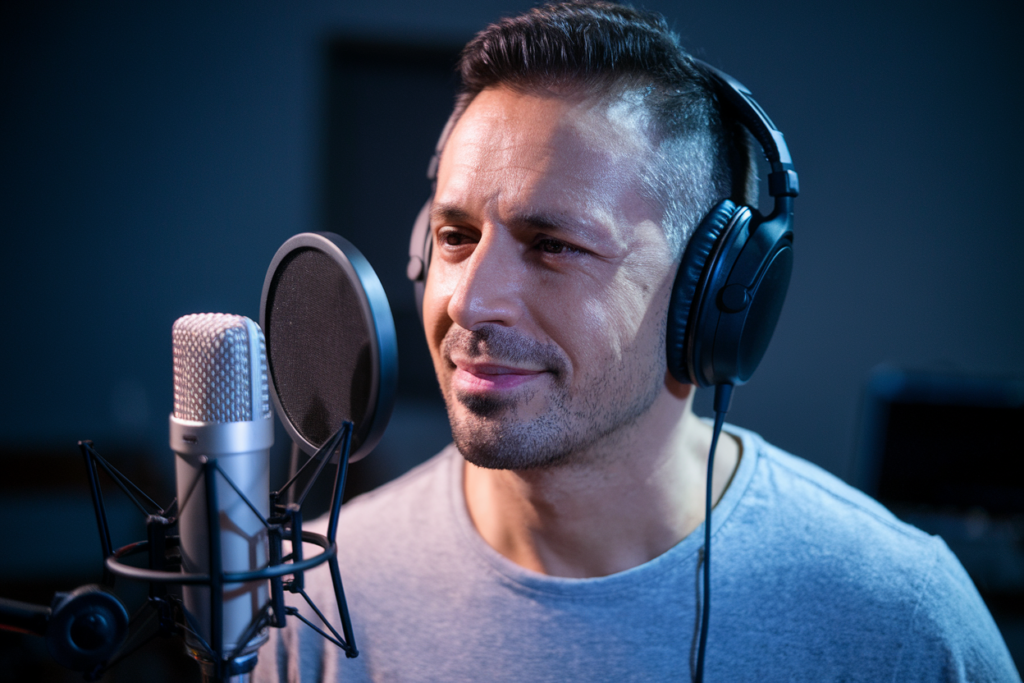Key Takeaways
- Understanding Turkish Accents: Familiarity with the unique characteristics of Turkish accents—pronunciation, intonation, and rhythm—is essential for effective voiceovers.
- Recognizing Regional Variations: Different regional accents, such as Istanbul, Anatolian, and Aegean, offer distinct flavors that enhance authenticity in voiceover projects.
- Impact on Audience Engagement: An authentic accent fosters a deeper connection with listeners, making the content more relatable and engaging.
- Conveying Authenticity: Selecting the right accent signals cultural understanding and relatability to your audience, building trust and enhancing message impact.
- Identifying Your Target Audience: Understanding your audience’s background helps narrow down which Turkish accent will resonate best with them.
- Utilizing Learning Resources: Online courses and practice with native speakers can significantly improve your mastery of Turkish accents for better voiceover performance.
Have you ever wondered how to pick the perfect Turkish accent for your voiceovers? With the growing demand for authentic and engaging content, nailing that accent can make all the difference in connecting with your audience.
Understanding Turkish Accents
Understanding Turkish accents is essential for effective voiceovers. An authentic accent enhances engagement and connection with the audience, making your project stand out.
Characteristics of Turkish Accents
Turkish accents exhibit distinct characteristics that define their uniqueness. You’ll notice variations in pronunciation, intonation, and rhythm. For instance:
- Pronunciation: Certain sounds, like the “ı” (undotted i) and “ğ” (soft g), have unique pronunciations.
- Intonation: The melodic quality often rises at the end of sentences, creating a conversational tone.
- Rhythm: Turkish has a syllable-timed rhythm, meaning each syllable receives equal emphasis.
Familiarity with these elements helps you select the right voice talent who can deliver an authentic performance.
Regional Variations in Turkish Accents
Regional variations add richness to Turkish accents. Different areas possess distinctive speech patterns and vocabularies. Here are some notable regional accents:
- Istanbul Accent: This accent is widely recognized and serves as the standard for media. It features clear articulation and a neutral tone.
- Anatolian Accent: Found in central Turkey, this accent carries more pronounced vowel sounds and softer consonants.
- Aegean Accent: Common along the western coast, it includes melodic inflections with local dialect influences.
When choosing a voice actor for your project, consider which regional accent aligns best with your audience’s expectations. Each variation brings its own flavor to voiceover work, enhancing authenticity and relatability.
Importance of Accent in Voiceovers
Selecting the right accent for voiceovers significantly impacts how your audience connects with the content. A well-chosen accent can enhance engagement, making your project resonate more deeply with listeners.
Impact on Audience Engagement
An authentic Turkish accent grabs attention and fosters a connection. When you use a voice actor who embodies the nuances of the accent, it creates an immersive experience. Listeners often feel more engaged when they hear familiar sounds that reflect their culture or language patterns. Whether it’s the melodic tone of Istanbul’s accent or the unique characteristics of Anatolian speech, each variation offers something distinct that can captivate your target audience.
Conveying Authenticity and Relatability
Using a specific Turkish accent lends authenticity to your voiceover project. It signals to your audience that you understand their culture and values. This relatability builds trust, which is vital in capturing listener interest. A voice artist who masters regional accents demonstrates not only skill but also respect for cultural diversity. This approach enhances your message, making it more relatable and impactful for those who identify with that particular dialect or intonation pattern.
Choosing the right Turkish accent isn’t just about sound; it’s about creating a genuine connection through language and culture in every voiceover project.
Tips for Picking a Turkish Accent
Choosing the right Turkish accent for your voiceover project can be a game-changer. It impacts how your audience connects with the content. Here are some tips to guide you in making that choice.
Identifying Your Target Audience
Understanding your target audience is crucial. Consider where they’re from and what cultural nuances matter to them. Are they native Turkish speakers or learning the language? Do they resonate more with urban or rural accents? Knowing these details helps you select a voice artist whose accent aligns perfectly with their expectations, ensuring your message hits home.
Exploring Different Turkish Accents
Turkish accents vary significantly across regions, each bringing its unique flavor to voiceovers.
- Istanbul Accent: This is often considered the standard Turkish accent, widely understood and used in media. Its clarity makes it popular among voice actors.
- Anatolian Accent: Rich in dialectical diversity, this accent includes variations from central Turkey. It adds an authentic touch if you’re aiming for regional representation.
- Aegean Accent: Known for its softer intonation and rhythmic patterns, this accent offers a warm and inviting sound suitable for various projects.
Resources for Learning Turkish Accents
Finding the right resources to master Turkish accents can elevate your voiceover projects significantly. Here are some excellent options to explore.
Online Courses and Tutorials
Online courses provide structured learning opportunities tailored for voice actors interested in Turkish accents. Platforms like Udemy and Coursera offer courses focusing on pronunciation, intonation, and regional variations. You can benefit from lessons that include interactive exercises and feedback from experienced instructors. Look for tutorials specifically designed for voice talent; these often feature practical tips on how to embody different Turkish accents effectively.
Practice with Native Speakers
Engaging in conversation with native speakers serves as one of the best ways to refine your accent. Consider joining language exchange programs or utilizing apps that connect you with native Turkish speakers. Regular practice helps you grasp the nuances of pronunciation and rhythm essential for authenticity in voiceovers. Don’t hesitate to ask for constructive criticism; feedback from those fluent in the language will aid your development as a voice artist, enhancing your skills even further.
Utilizing these resources will enrich your understanding of Turkish accents, making it easier to choose the right style for your next voiceover project.
Conclusion
Choosing the right Turkish accent for your voiceover project can make all the difference in connecting with your audience. By understanding the unique characteristics of each accent and considering regional variations, you’ll enhance authenticity and relatability. Your choice should reflect not only what sounds good but also what resonates with your specific listeners.
Utilizing available resources to refine your skills will further elevate your work. Engaging with native speakers or enrolling in online courses can deepen your understanding of pronunciation and intonation patterns. With these strategies in place, you’re well on your way to delivering compelling voiceovers that truly capture the essence of Turkish culture and language.
Frequently Asked Questions
Why is selecting the right Turkish accent important for voiceovers?
Choosing the right Turkish accent enhances audience engagement and connection. An authentic accent makes content more relatable, ensuring it resonates with listeners and stands out in a crowded market.
What are the main types of Turkish accents discussed in the article?
The article highlights three primary Turkish accents: the Istanbul accent, known for its clarity; the Anatolian accent, rich in dialectical diversity; and the Aegean accent, characterized by its softer intonation. Each brings unique qualities to voiceover projects.
How can I identify my target audience’s preferred Turkish accent?
To determine your audience’s preferred accent, research their geographic location and cultural background. Understanding regional preferences will guide you in choosing an accent that aligns with their expectations and enhances relatability.
What resources are available for learning Turkish accents?
Resources include online courses on platforms like Udemy or Coursera focused on pronunciation and intonation. Additionally, engaging with native speakers through language exchange programs or apps can help refine your understanding of specific accents.
How does an authentic Turkish accent impact trust with audiences?
An authentic Turkish accent signals cultural understanding and values to your audience, fostering trust. When viewers feel understood through language nuances, they are more likely to connect emotionally with your content.







